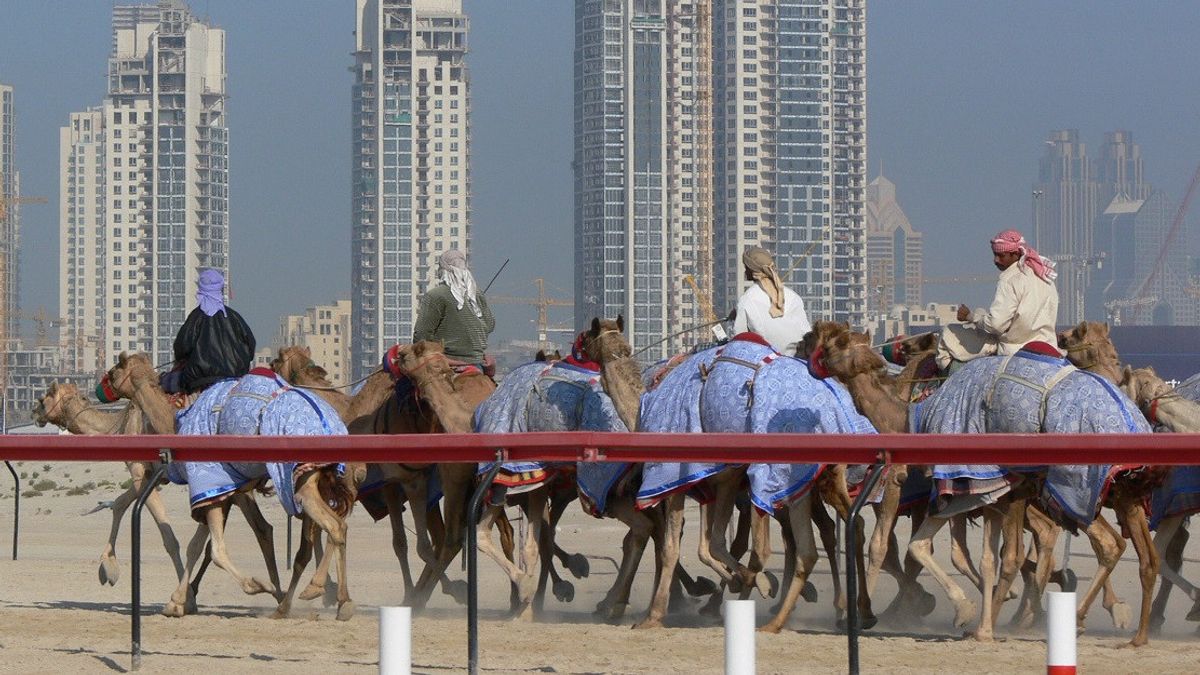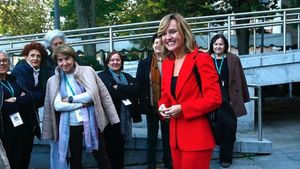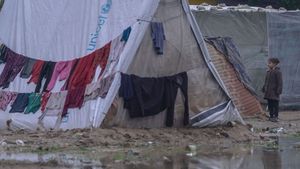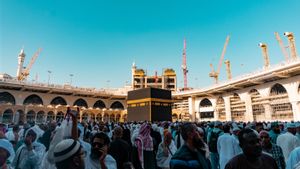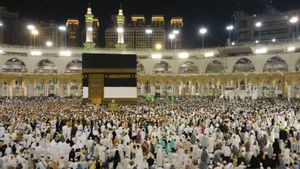JAKARTA - Deep in the desert of the United Arab Emirates, the moment camel breeders have been waiting for has arrived. Families haul their camels through the wind-carved sand. The waiter poured a small cup of Arabic coffee. The judges descended into the desert.
Even as the omicron variant spreads across the globe, legions of breeders from Bahrain, Kuwait, Oman, Saudi Arabia and Qatar are traveling to the UAE's southwestern desert this week with 40,000 of their most beautiful camels for the Al Dhafra Festival.
Five annual contest judges assert that beauty is not in the eye of the beholder. Camel aesthetics are evaluated according to precise categories defined generations ago. Only the she-camel participated, because the males were fighting too much, authorities said.
As hundreds of hairy black camels gallop across dusty meadows, necks and humps bobbing, one of the organizers, Mohammed al-Muhari, outlines platonic ideals.
"The neck must be long and slender, the cheeks broad and the nails big. The lips must be drooping. They must walk high with graceful posture. Not much different from humans," explained al-Muhari to The Associated Press as quoted December 24.

High standards have driven many breeders to profit, using banned Botox injections to plump camel lips, muscle relaxants to soften the face and silicone wax injections to widen the hump.
Festival spokesman Abdel Hadi Saleh declined to say how many participants were disqualified for plastic surgery this week. All camels undergo strict medical examinations to detect artificial touch and hormones before entering the Al Dhafra Festival.
Since Emirati investigators started using X-rays and sonar systems a few years ago, Saleh says the number of fraudsters has dropped dramatically.
"We caught them easily, and they realized that being caught was not worth the cost of their reputation," he said.
A lot is at stake. Al Dhafra Festival offers the top 10 winners in each category of prizes ranging from 1,300 to 13,600 US dollars. At the main Saudi contest, the most beautiful one got 66 million US dollars. The camel changed hands in a deal worth millions of dirhams. But breeders insist it's not just about money.
"This is kind of our heritage and our customs are revived (the rulers of the Emirates)," says 27-year-old camel owner Saleh al-Minhali from Abu Dhabi. He wears designer sunglasses over his traditional headdress and Balenciaga sneakers under his kandura, or Emirati tunic.

Gone are the days when camels were an integral part of everyday life in the federation of seven sheikhs, a chapter was lost when oil wealth and global business turned Dubai and Abu Dhabi into a hub of skyscrapers with marble malls, luxury hotels and nightclubs. crowded. Foreigners outnumber local residents by nearly nine to one in the country.
However, experts say the Emirate is increasingly looking for meaning in echoes of its past, a Bedouin tradition that prevailed before the UAE became a country 50 years ago.
"Young Emiratis who have identity issues are going back to their heritage to find a sense of belonging," said Rima Sabban, a sociologist at Zayed University in Dubai.
"Society is developing and modernizing so quickly that it creates an internal crisis," he continued.
Camels race on the ancient racetracks of the Emirates, and still offer citizens milk, meat and historic touchstones. Festivals across the country celebrate the importance of the camel. Al Dhafra also features eagle racing, dromedary dancing and a camel milking contest.
"People in Dubai may not even think about it, but young people here really care about camels," said Mahmoud Suboh, festival coordinator from Liwa Oasis on the northern edge of the desert's Empty Quarter. Since 2008, he has watched the night market transform from a remote desert outpost into an extravaganza that attracts camel lovers from all over the world.
In a sign of the contest's exploding popularity, about a dozen young Emiratis who call themselves "camel influencers" filmed and posed with camels on Wednesday, broadcasting it live to thousands of Instagram followers.

The coronavirus pandemic has restricted tourism to festivals and dampened the mood. Police checked that the visitor had received both doses of the vaccine and tested negative for the virus. Authorities harassed participants to adjust their face masks, threatening fines. There were few foreigners or other onlookers walking around the venue on Wednesdays.
Each category in the 10-day contest is divided into two types of camels: Mahaliyat, a brown breed originally from the UAE and Oman and Majaheen, a darker breed from Saudi Arabia. Wednesday's exhibition focuses on the 5 year old black Majaheen camel.
For hours, the jury examined each camel, scribbling a list of animal body parts for judging purposes. The ranchers shouted to startle the camels so that they looked up and exposed their elongated necks.
As the sun sets over the sand, the victorious breeders are called upon to receive their glittering trophies. Below, in the earthen circle, the camel is crowned with a shawl covered in gold and silver.
"Until now we are the first in the category. We have received more than 40 prizes (in various camel contests) this year alone," said Mohammed Saleh bin Migrin al-Amri carrying four trophies that day, including two gold.
The English, Chinese, Japanese, Arabic, and French versions are automatically generated by the AI. So there may still be inaccuracies in translating, please always see Indonesian as our main language. (system supported by DigitalSiber.id)
